AKA: Dancing King
Director: Cheng Cheh
Writer: James Wong
Cast: Ricky Cheng Tien Chi, Yang Li-Su, Sun Jung Chi, Yang Guang-Yo, Chen Kuan-Tai, Got Heung Ting, Lui Fong, Dennis Brown, Anita Mui Yim Fong
Running Time: 90 min.
By Paul Bramhall
It’s fair to say that legendary director Chang Cheh more than earned his moniker of the Godfather of Hong Kong action cinema, however while his crowning achievements are many, there can also be no doubt that the post-Shaw Brothers era of his filmography can make for some odd viewing. After re-locating to Taiwan and forming his own production company there, Cheh went on to make a number of movies with Taiwanese native and Baby Venoms stalwart Ricky Cheng. After starring in Cheh’s latter day Shaw Brothers efforts, such as Five Element Ninjas and The Weird Man, Cheng would continue to feature in Cheh’s post-Shaw Brothers ventures into the realm of fantasy, such as Attack of the Joyful Goddess and The Nine Demons.
When the stars of Cheh’s movies from both past and present got together for the movie which was to secure his retirement, 1984’s The Shanghai Thirteen, that technically should have put a cap on both Cheh’s career as a director, and at least opened up news paths for Cheng to pursue. But old habits die hard, and Cheh soon found himself with the money he made from The Shanghai Thirteen, which was supposed to be for his retirement, being used to make another production. Notably he’d go on to make a further six movies, one of which was another retirement flick in the form of 1990’s Hidden Hero, before finally wrapping up with Last Ninja in China from 1993. But perhaps the movie he made directly after The Shanghai Thirteen can be considered a candidate for the oddest of his career, with the appropriately titled Dancing Warrior.
Once again Cheh would put Cheng in the lead role, and Dancing Warrior would mark the last time the pair would work together, before Dung Chi-Wa became Cheh’s actor of choice for his final movies. Their last collaboration together has been a title I’ve been curious about watching for the longest time, purely because the plot descriptions floating around on the net sound about as far away from a Chang Cheh movie as humanly possible. A dancer who dreams of making it big moves to New York to pursue his dream of appearing on Broadway. Really? This is a Chang Cheh movie? The guy who specialises in heroes majestically embracing their heroic deaths in a deluge of balletic slow motion and blood-letting, usually impaled by more weapons than any normal human could realistically withstand, has a movie under his name about a dancer pursuing the American Dream!?
Having now watched it, I can safely state that yes, indeed he does. What’s perhaps more surprising is that, far from being Cheh’s version of Mismatched Couples, Yuen Woo-Ping’s breakdancing movie from the same year with a fresh faced Donnie Yen, Dancing Warrior is more closely described as Cheh’s version of Flashdance. Like the first half of the title suggests, if The Fantastic Magic Baby can be considered Cheh’s go at a full blown fantasy adventure, then Dancing Warrior is his crack at directing a dance inspired musical. Of course, Cheng’s alcohol loving dancer also happens to be a kung fu expert, but the fact almost seems to be thrown in out of obligation, and perhaps more significantly, let’s Cheh provide a finale that delivers what’s expected. But more on that later.
As with almost anything Cheh did, particularly from the Venoms era onwards, subtlety is not the order of the day here. Proceedings open with Cheng made up as a clown in a Hong Kong TV studio, where he’s a backing dancer for a talk show. However when the shows arrogant host (a cameo by James Wong, who also wrote the script) shows up late, he ends up storming out, and basically spends the first 10 minutes of the movie dancing around the streets of Hong Kong in clown makeup. There’s something mildly infuriating about watching it. I mean, he even goes to a bar and gets drunk as a clown, and no one bats an eye lid, and then bumps into a car being driven by Chen Kuan-Tai, turning in a bizarre cameo. When finally a policeman shows the first sign of reality, and asks him to show some ID, he prances about acting as a mime for what feels like an eternity, in what’s clearly supposed to be a comical sequence, but serves to be anything but. Cheh has never been good at comedy, and nothing changed towards the end of his career.
Dancing Warrior also plays its part in the topic that rears its head during many a Chang Cheh discussion – the recurring theme of homoerotic bonding between the male characters of his tales. While Dancing Warrior is still a few years before the slow motion rolling around on the floor embraces found in Slaughter in Xian, it perhaps presents a solid argument that Cheh was indeed a straight guy, just with a rather overzealous approach to bromance. Cheng has a female love interest throughout the movie (a latter day Cheh movie that features no female betrayal!), played by Yang Li-Su, which leads to an amusing scene of Cheng being introduced to her male dance instructor. The two guys mutual love of dance leads to a scene in which they take to the floor in a nightclub together, which, at its most bizarre, has Cheng leaping into the arms of the awaiting instructor, a kind of all male version of a Dirty Dancing number. Misguided yes, but also weirdly innocent.
Indeed the word misguided could also be applied to Cheng’s dance loving bumpkin character. Shakespeare once said the world’s a stage, and that’s how Cheng views it. He just wants to dance, and at a moment’s notice he frequently does – in the street, in a restaurant, during a kung fu class, in the club, the list goes on. Whenever he does break into dance, it’s not just for a couple of seconds, but for the duration of a whole song. While Cheng’s physical dexterity is impossible to debate (many fans are of the opinion Cheh chose him as a lead due to his physical talents rather than his looks – difficult to argue), watching him constantly jump over tables, over-energetically tear up a dance floor, or have a dance off in a club that looks like an aerobics video gone wrong, does get a little tiresome.
Cheng’s dancing prowess eventually captures the eye of a businessman who invites him to New York to continue his training there. However, in the first sign of Dancing Warrior being a Chang Cheh movie, it turns out to be a trick, and the businessman actually wants Cheng to be part of an underground illegal fighting tournament. Of course, Cheng just wants to dance, so refuses and ends up performing a Monkey King routine in Central Park to get by from the donations he’s given. It’s here where he’s spotted by an African American kung fu teacher played by Dennis Brown, in his one and only movie appearance, and the pair strike up a friendship. Brown correctly guesses that Cheng also knows kung fu, and the pair strike a deal – Cheng will teach his students, on the basis that he’s allowed to use the kung-fu studio for dance practice. Plenty of cringe worthy kung fu and Broadway style dance routine infusion ensues, until Brown himself becomes embroiled in the illegal fighting.
It’s this plot development that provides us with what every Chang Cheh fan has been waiting for, a 7 minute 3-on-1 fight finale that sees Cheng taking on a villainous boxer played by Yang Guang-You (complete with hidden blades in his knee and elbow pads) and his two lackeys. It’s one of the most unique finales in Cheh’s filmography, in that it essentially takes the same technique he used 15 years earlier for Vengeance!, which has Ti Lung’s frantic teahouse fight juxtaposed with his Peking Opera performance, and applies it to a stage musical instead. So while Cheng fights off his opponents in reality, the scene frequently cuts to him, bare chested and in a long haired wig, dancing on a garishly coloured stage while fending off costumed attackers who look like rejects from Cats. Part of the fight is even set to a song, but dare I say, it works, giving way to one of the most bizarre closing shots you’re likely to see.
Like his fellow Shaw Brothers director Lau Kar Leung, Cheh never really seemed at home with movies based in a contemporary setting, a theory which is further backed up by the fact that, out of the 94 times he sat in the director’s chair, only a handful of them were modern day based. The last time Cheh directed a contemporary actioner was 1977’s Chinatown Kid, which interestingly also set itself Stateside, although instead of New York it was San Francisco. At least this time though, despite Cheh’s dwindling budgets, Dancing Warrior does in fact feature location shooting in the Big Apple. More so than any of his other contemporary outings, it’s Dancing Warrior which feels the most out of time, almost as if the New York being portrayed onscreen is a version of the city which only exists in Cheh’s head. It may not contain the supernatural elements from the likes of Heaven and Hell and Attack of the Joyful Goddess, and is supposedly grounded in reality, but make no mistake, once watched you’ll realise Dancing Warrior is just as much of a fantasy. Only with more, well, dancing.
Paul Bramhall’s Rating: 5.5/10

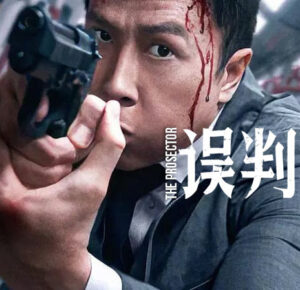


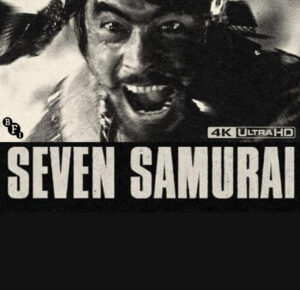
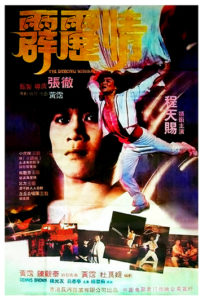
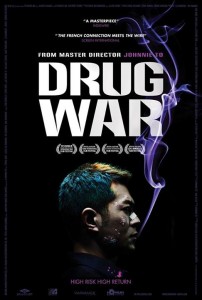

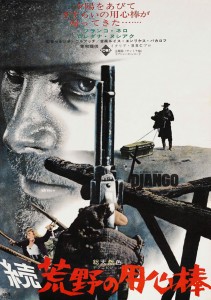


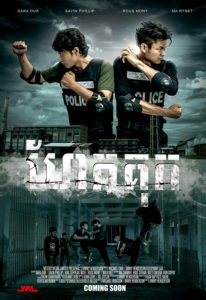



 Perhaps more than any other genre, making a good first impression in an action movie is paramount. Sure there can be some characterisation, plot setup etc. beforehand, but when that first action scene hits, it has to count. Because let’s face it, audiences are tuning into an action movie for action. If that first scene when things start to get physical is a damp squib of an excuse to get the adrenalin pumping, then all is lost. Don’t expect the audience to stick around.
Perhaps more than any other genre, making a good first impression in an action movie is paramount. Sure there can be some characterisation, plot setup etc. beforehand, but when that first action scene hits, it has to count. Because let’s face it, audiences are tuning into an action movie for action. If that first scene when things start to get physical is a damp squib of an excuse to get the adrenalin pumping, then all is lost. Don’t expect the audience to stick around.

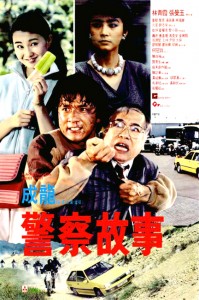
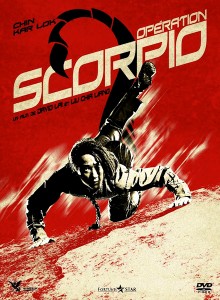
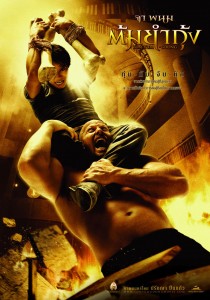
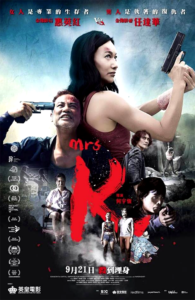






3 Comments